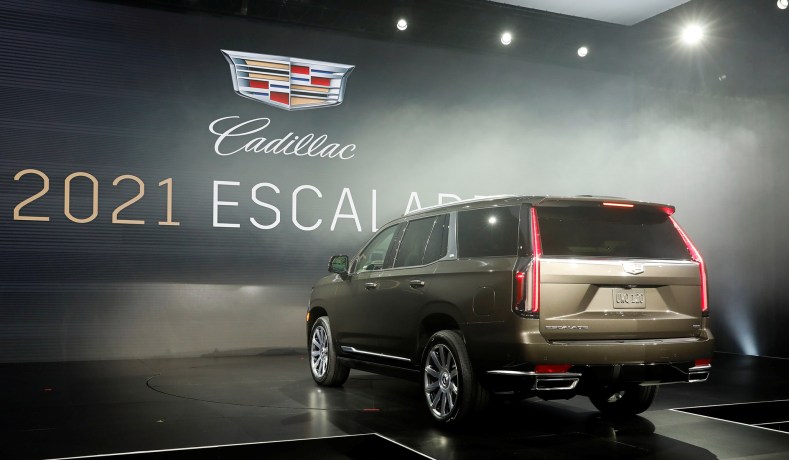
As the automotive industry continues to globalize, some are wondering, “What is an American car?” Dmitri Solzhenitsyn recently wrote a piece making the case for why we should buy from Cadillac — the luxury arm of General Motors — concluding, “In any case, as American consumers, we surely have the right to make the aesthetic — perhaps irrational — decision to voluntarily purchase the fruits of American design, ingenuity, and labor, whether they be those of Cadillac, Tesla, or Chevy.” In response, Kevin Williamson cast doubt upon the status of most any car as being American, as supply chains make them the product of a dozen or more nations. My view is that it matters not where the vehicle’s parts were sourced or in which plant it was assembled; an American car earns its distinction by what it aspires to be.
To be “American” properly understood, one of three qualities must be fulfilled — preferably two simultaneously. First, the vehicle should truly rip — embarrassing cars at twice its pricepoint in a straight line. Second, driving it should be like sitting on a couch attached to clouds connected via cumulus coilovers, wafting drivers effortlessly from Arizona to Vermont in the span of a day (if they are so inclined). Third, it should provide more elevation than God’s, more storage than a semi, and more towing capacity than your sorry fishing boat will ever need.
If at all possible, the vehicle must be too garish for the pearl-clutching British sensibility, too wide for Italian and Japanese through-fares, and too crudely engineered to leave a German engineer’s Auto-CAD program.
The upcoming C8 Corvette is an American car for the first requirement, and it goes whole hog. Boasting a twin-turbo V8 which produces around 700 horsepower, the C8 tears a hole in space with a 2.7 second 0–60 MPH time. For comparison, the Ford GT, Ferrari F8 Tributo, and Lamborghinio Huracan Evo clock in two tenths of a second slower for — at a minimum — thrice the price. (Other cars in this category are the Tesla Model S (any vehicle with a setting of “Ludicrous Speed” is automatically American: the Dodge Challenger Hellcat, and, for a historic example, the custom Shelby Mustang in Bill Cosby’s stand-up special 200 M.P.H.)
Will the C8, being a GM product, have horrid build quality, at least one major recall, and many wrecks as individuals who that morning drove a Chevy Traverse to the track find out what acceleration feels like as they hit the tire wall on a hairpin turn deploying the airbags straight into their noses? Yes, almost certainly. However, it is an American tradition to attempt the seemingly ill-advised or dangerous; to be told something shouldn’t be done due to propriety falls upon deaf ears. From George III onward, we have been a people who often tell nags where to shove it; generally to our — and the world’s — benefit.
The Toyota Avalon fits nicely as an example of requirement two. It is a massive corporate sedan with soft suspension, buttery leather seats, and all the comforts of home for a reasonable price. Like the Buicks and Lincolns of yesteryear, the Avalon moves nowhere quickly, but it hardly needs to. It will carry you and your family across thousands of miles in this fine country with nary a complaint or sore rump. Its understated elegance speaks of a Protestant work ethic and self-effacement not seen in today’s aggressively hideous and “sporty” Cadillacs, BMWs, and Mercedes.
Should you want a nasty, American combination of speed and comfort, the Mercury Marauder — derived from the Mercury Grand Marquis/Ford Crown Vic land yachts — has both the plush accoutrements of an executive sedan and 300 H.P. stealthily residing under the hood.
Kevin Williamson wrote a few years back about vehicles fitting requirement three: trucks and the Sport Utility Vehicle. Once thought dead, these vehicles are resurgent. But not all are created equal. Once the realm of V8 Chevy Suburbans and Jeep Cherokees, the segment has been infiltrated by four-cylinder horror shows such as the Chevy Trax, Ford Escape, and the *shudder* Nissan Juke. An American SUV or truck should make Tesla Y drivers apoplectic with revulsion, and should be able to depart a Texas interstate through the ditch onto the frontage road instead of using the paved exit and pull a camper from a Wisconsin side yard to the Grand Canyon with ease. Current examples are the Toyota Land Cruiser, RAM 1500, and Ford F-150. Anything British (Land or Range Rover) must heed the Australian proverb: “If you want to go into the bush, you take a Land Rover, but if you want to come back, you take a Toyota Land Cruiser.” American cars are reliable because we’ve been the comeback kings since Valley Forge through Gettysburg and Pearl Harbor.
In short, to be American the vehicle must exemplify all that we are. Our cars, like us, are slightly flawed and occasionally bizarre, but filled with vigor and chutzpah to show up those who look down their noses at us and our exceptional way of being. Though the badges may be foreign, investors diverse, and the parts crossing borders many times, the American car lives as long as there are Americans to recognize them for their freedom-loving virtues. God bless America, God bless the American automobile.


